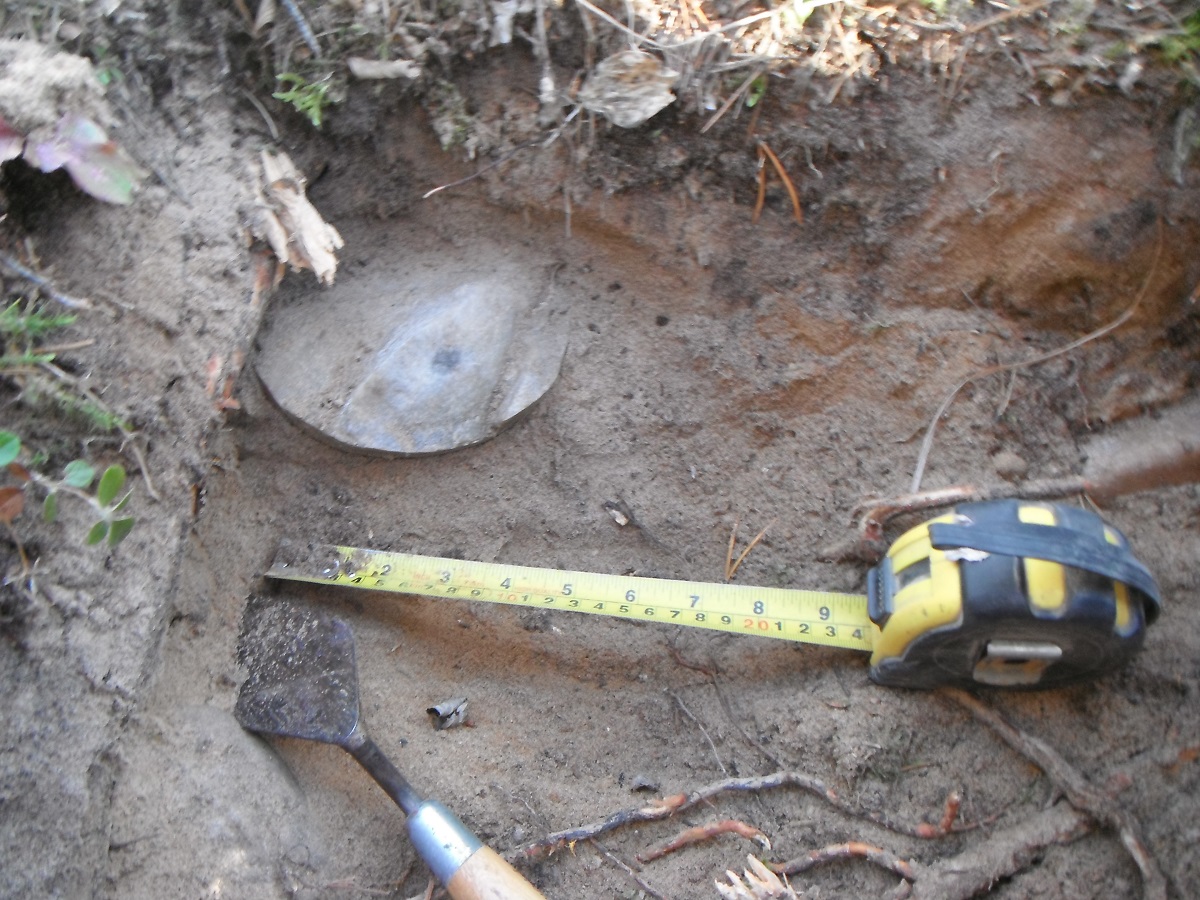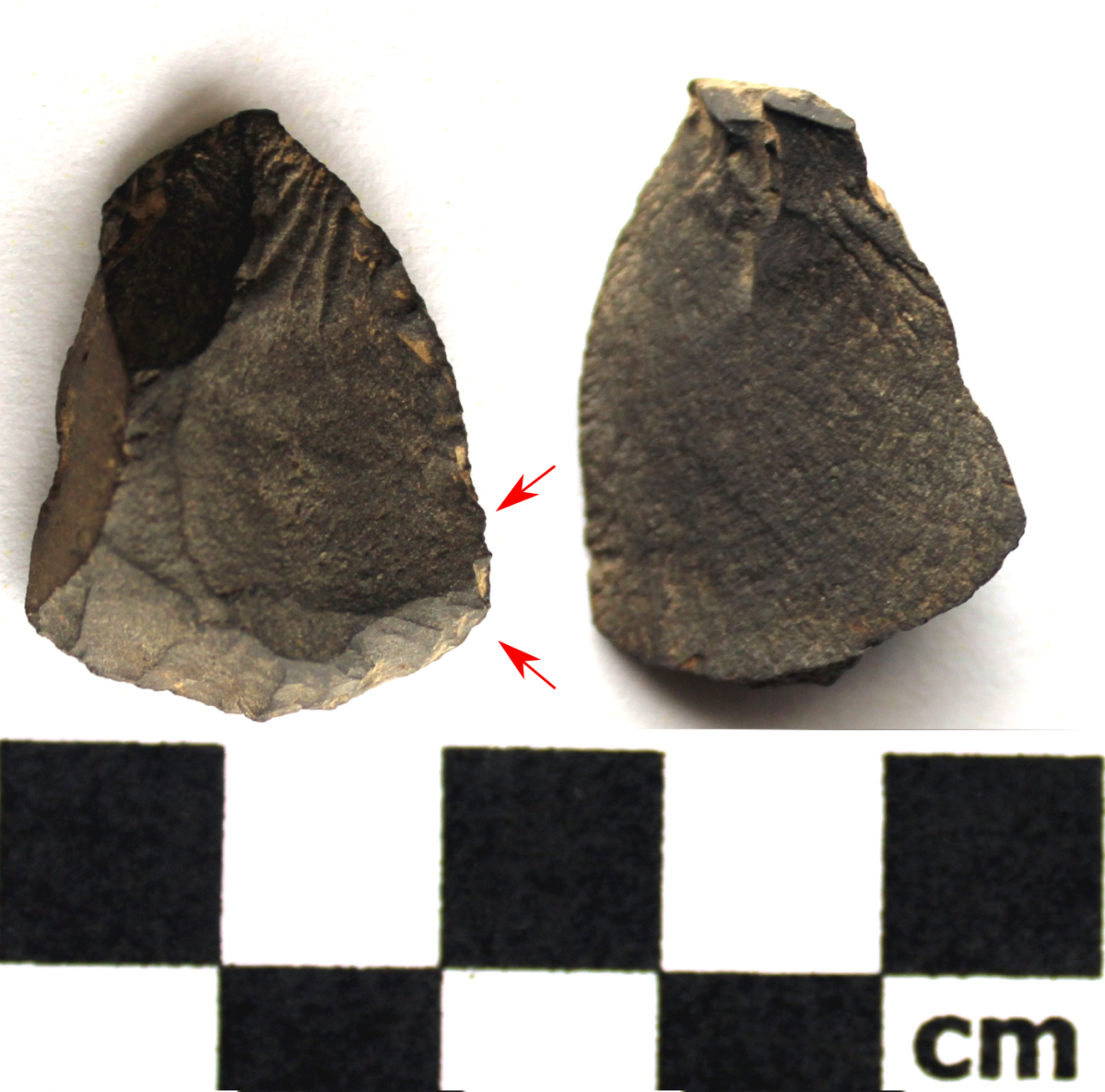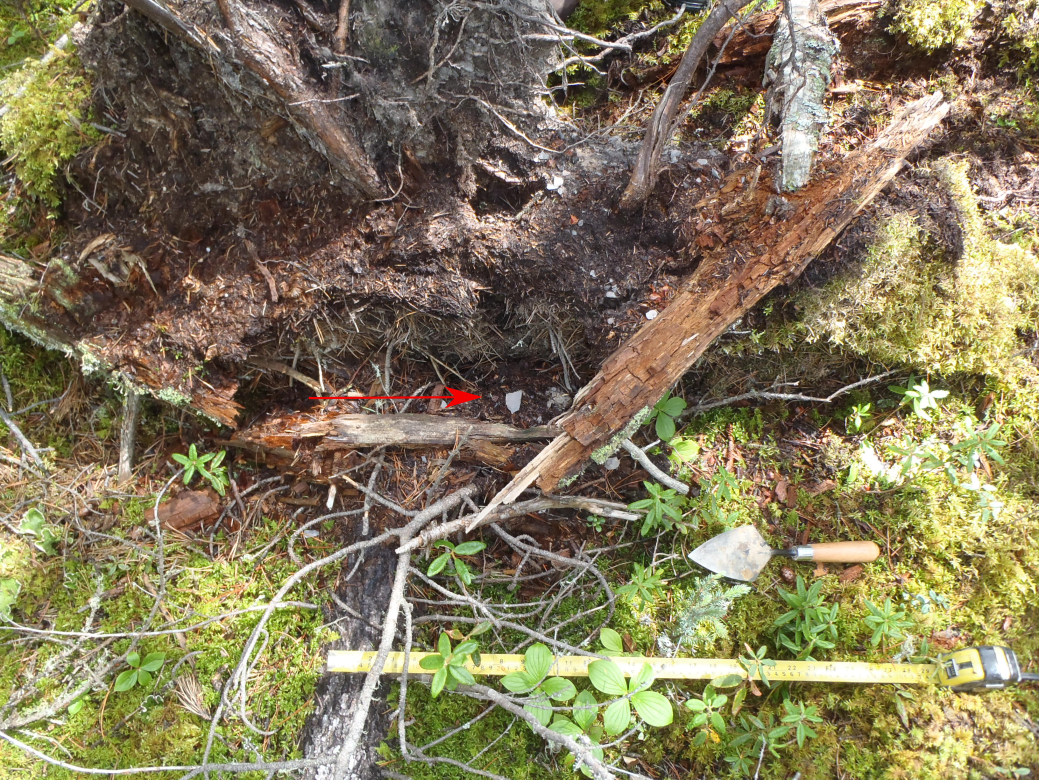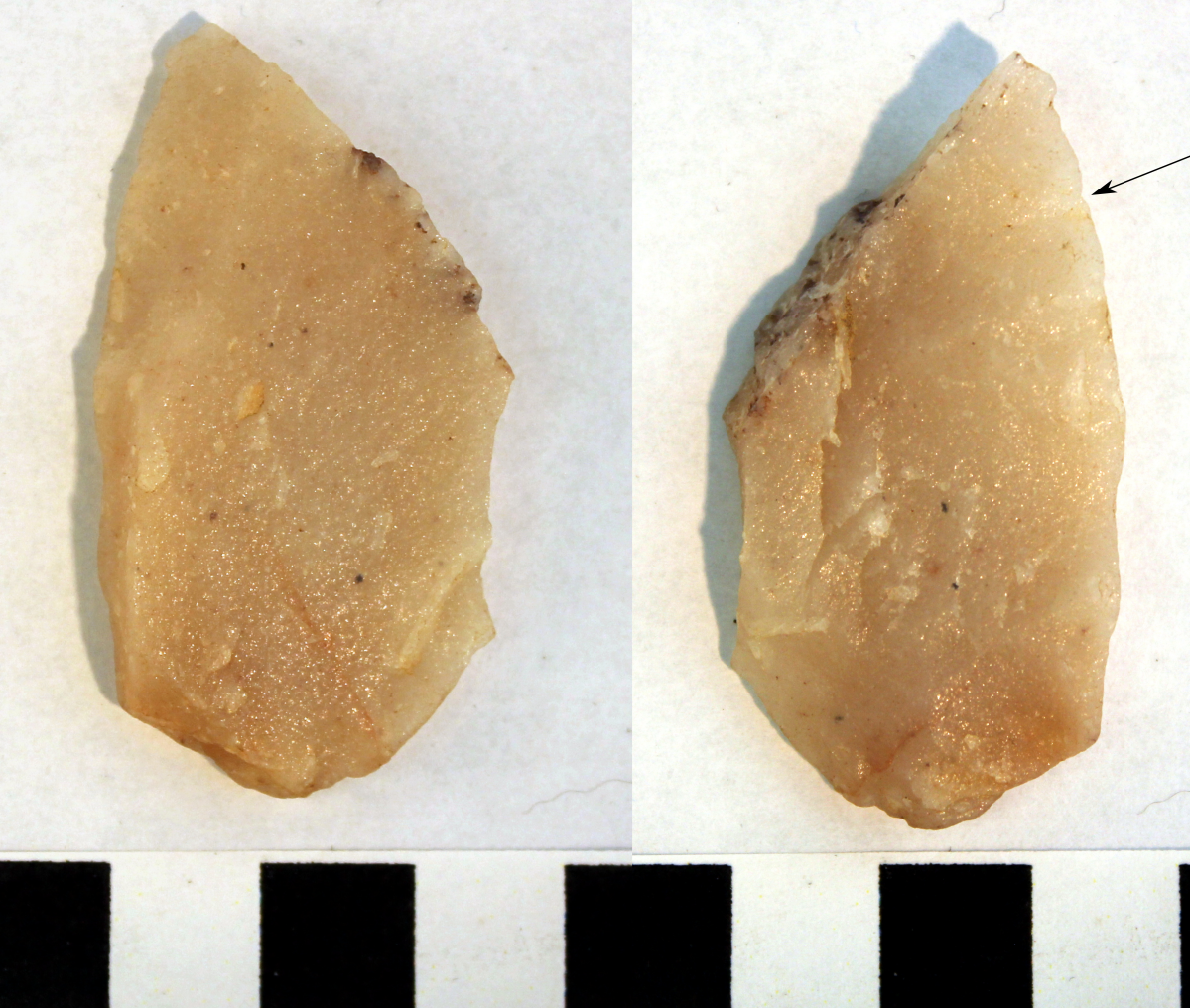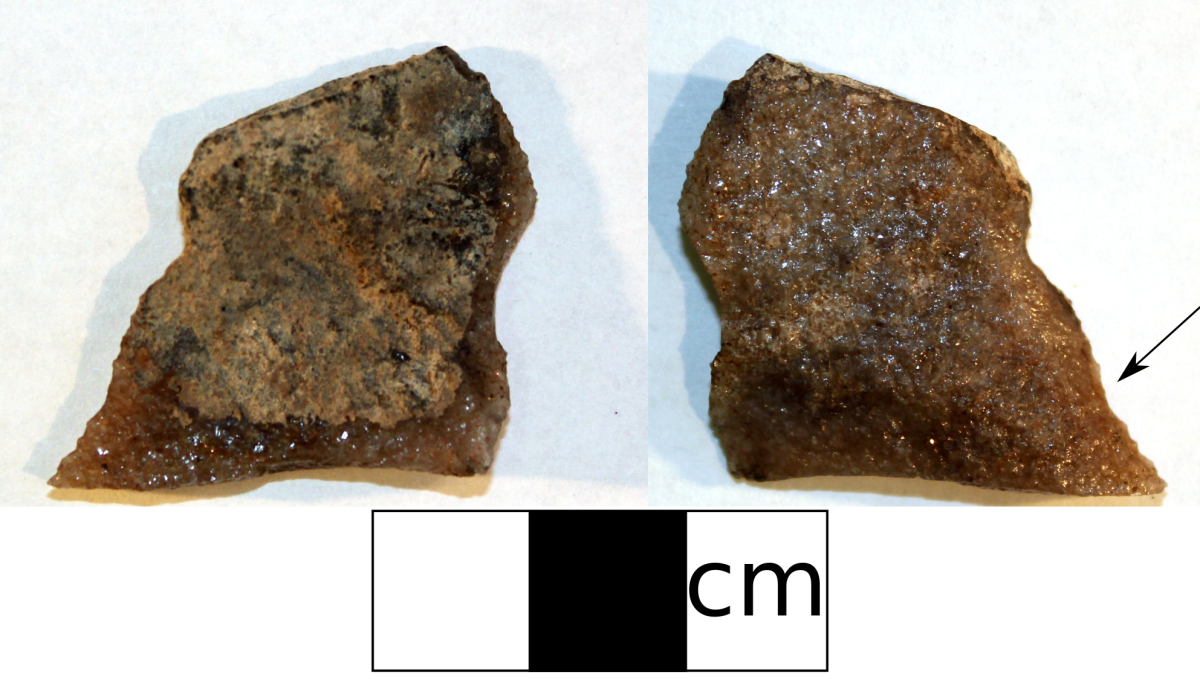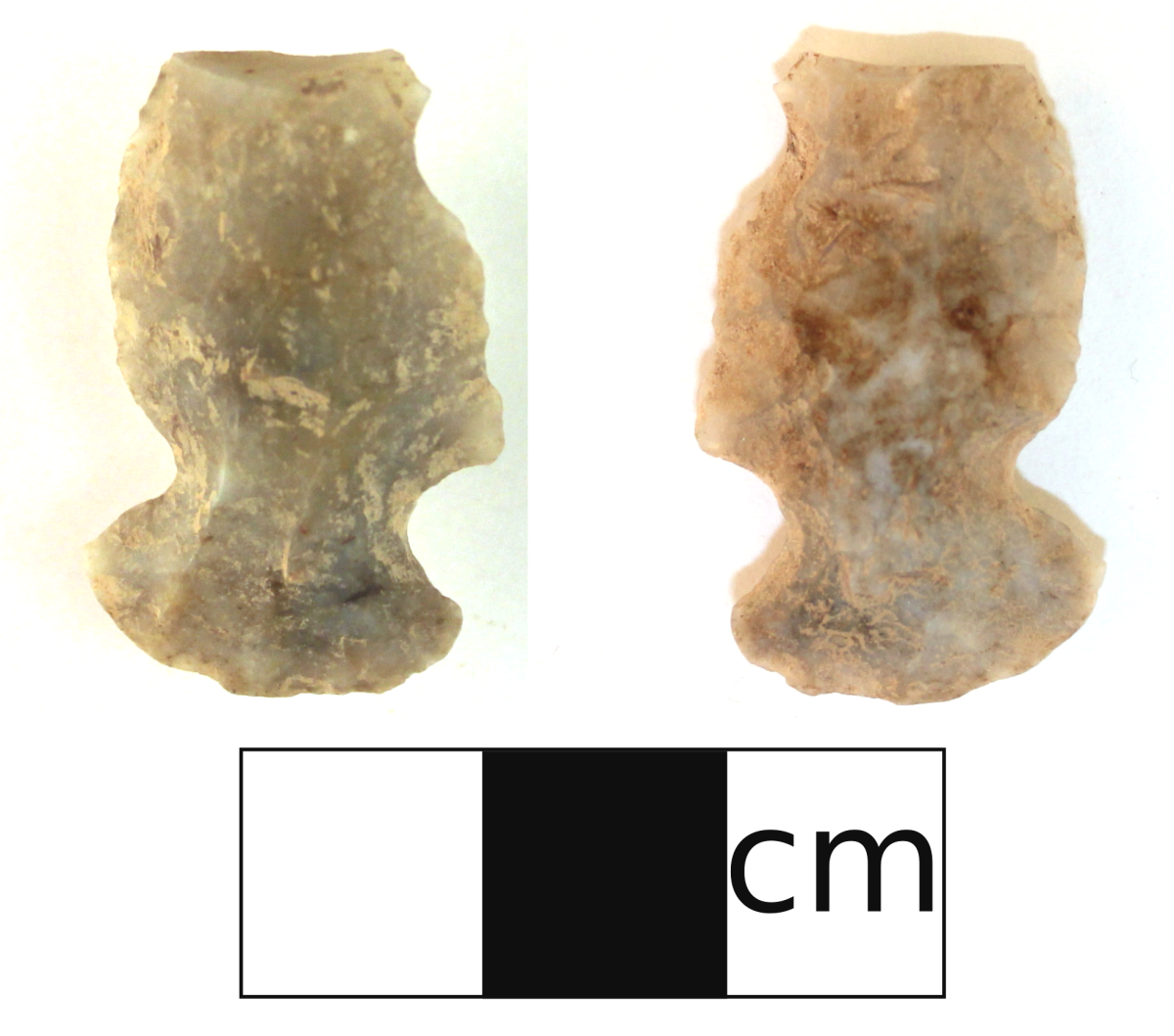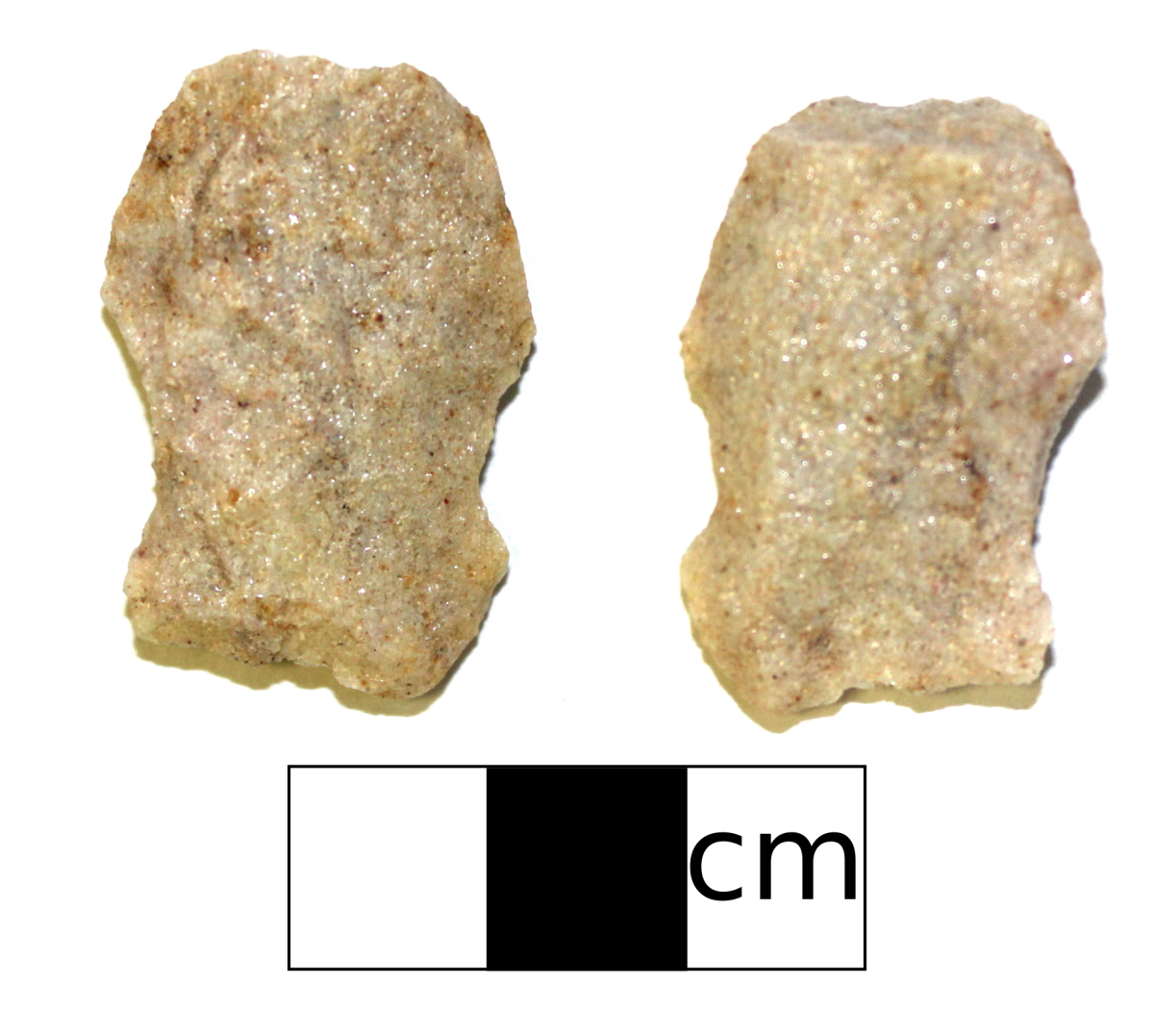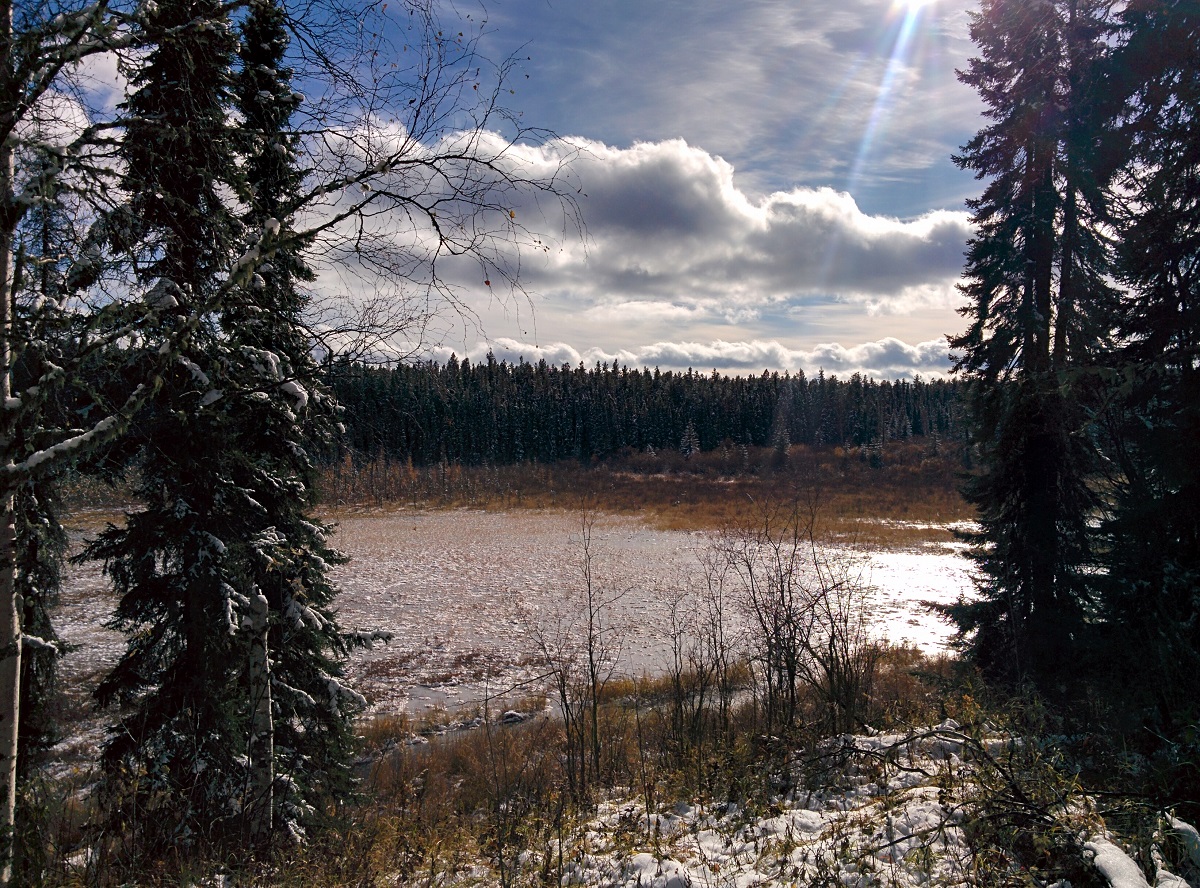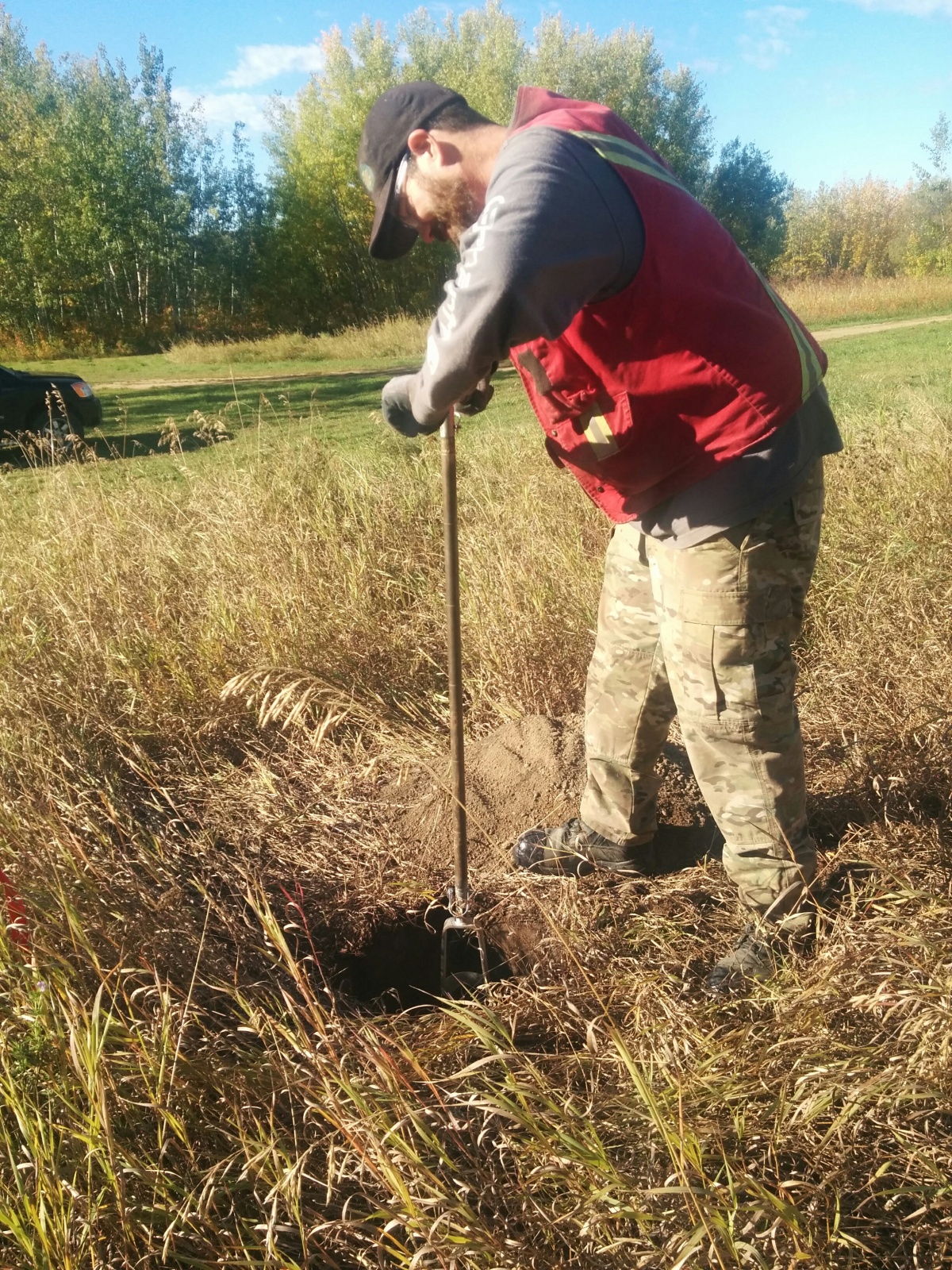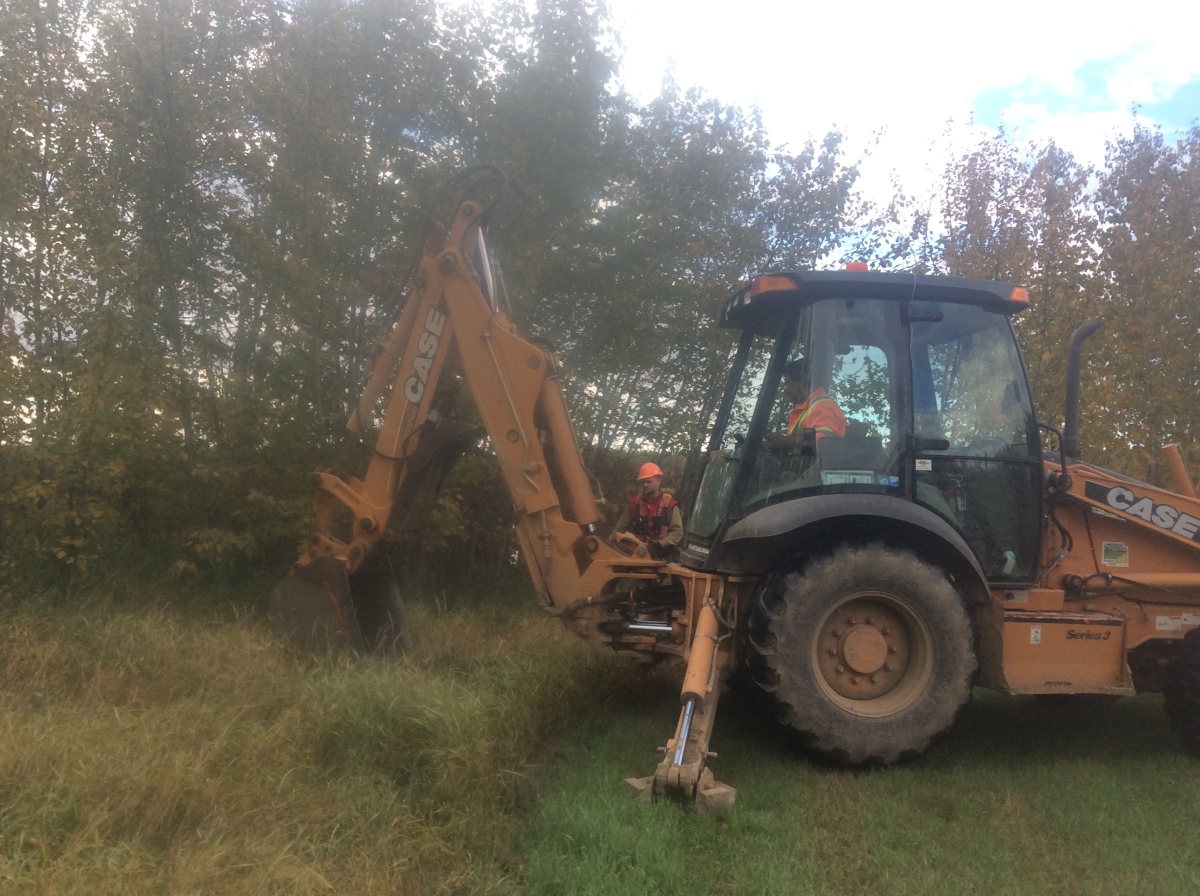This core was found “in situ”. This means that when the shovel test was excavated, the artifact was observed in its original position. When an artifact is in situ, the original context of the artifact is preserved.
Tag: aboriginal
Expedient Tool
An expedient tool is an object that can be made quickly and easily with little or no production effort. This is a retouched flake we collected during the summer of 2016. The red arrow is pointing to where the flake has been retouched.
Tree Throw
We often inspect tree throws for artifacts. A tree throw is a bowl shaped depression that is often created when a large tree has blown over or has had its stump pulled out. This tears out soil with it creating a surface exposure for us to inspect.
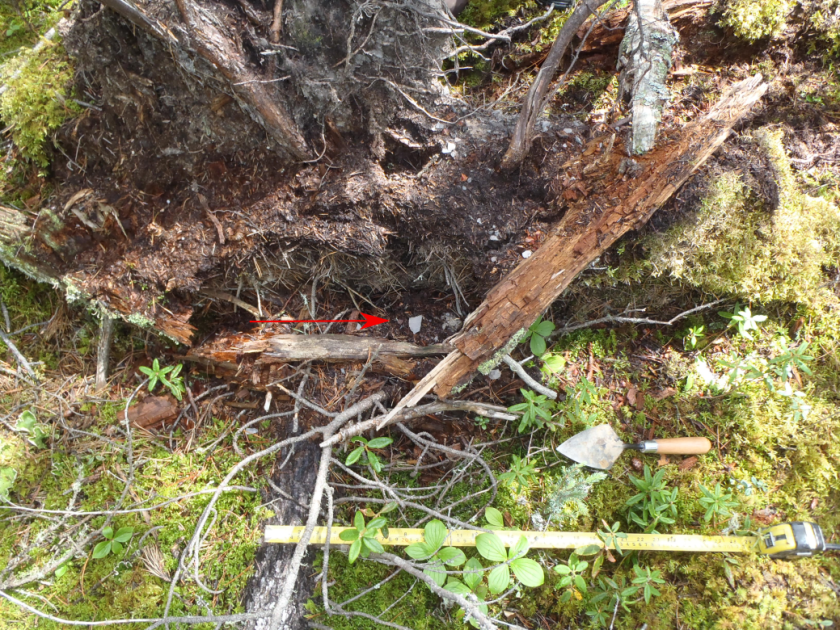
Isolated Find
This biface came from a site that was classified as an isolated find. This term means that only one artifact was observed and/or collected.
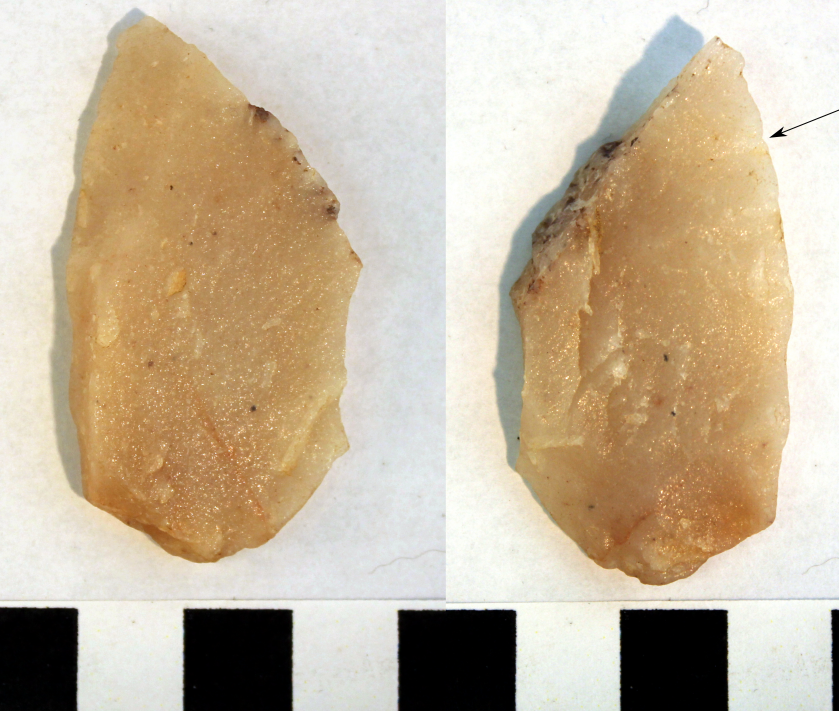
Retouched Flake
A retouched flake is a quickly made tool that has had small flakes removed to blunt, sharpen, or refine the edge of the tool. It can also be used as a scraper or a knife.
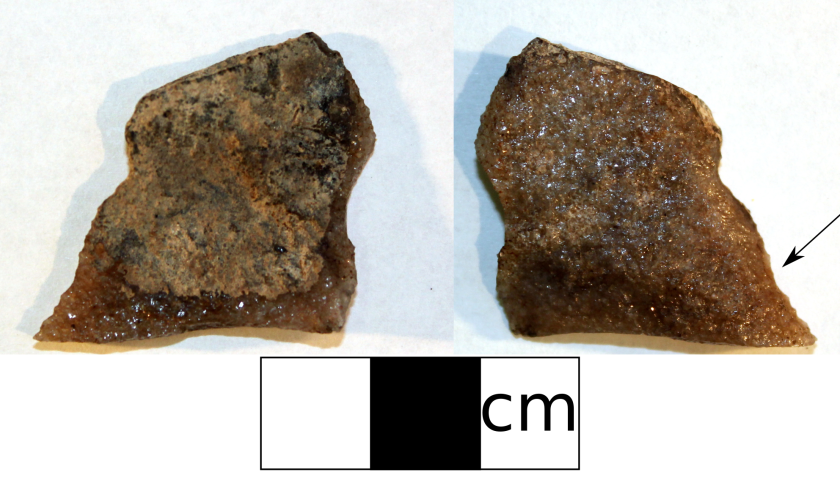
Side-Notched Projectile Point
We often post images of beautifully crafted tools such as the besant point from FcPu-11 or the siltstone knife from Buffalo Beach but not every tool we find is a “work of art.” This week’s photograph is of an “ugly” artifact we found in 2016 when undertaking an HRIA for Sundre Forest Products. The site was found on a terrace overlooking the confluence of two tributaries to the North Saskatchewan River. The artifact is a side-notched chert projectile point similar to the Prairie or Plains side-notched typology. The point is asymmetrical with one edge being a rounded convex shape and the other an undulating edge with an angular shoulder. The tip of the point is broken off which is common of the projectile points we find and is likely the reason the point was discarded. While aesthetics can add to the function of a projectile point this artifact demonstrates it was not necessary. The idea that it doesn’t matter how it looks as long as it works was alive in the past as much as it is today.
Atlatl Point
This little quartzite projectile point comes from a small site near Wabasca-Desmarais, Alberta. We found it on a small hill that was next to a lake, along with several chert and quartzite flakes. This point likely was fitted to an atlatl dart, a type of feathered throwing spear that uses a hooked throwing stick to help propel the projectile.
It is difficult to tell how old this particular projectile point is. It has a straight base and broad side-notches, which is similar to the Besant Phase (2500 to 1000 years ago on the northern plains), but it is also similar to some of the early side-notched points from the Middle Precontact (8000 to 5000 years ago). Looking further to the north, this stone point also has some similarities to the kind of projectile points found in the Taltheilei tradition in the Northwest Territories. Unfortunately, we do not have a clear understanding of projectile point typologies in the boreal forest of northern Alberta, as this region is lacking deeply stratified archaeological sites with material that we can radiocarbon date.
What a view!
Welcome to a snowy day in the Swan Hills! We found a small archaeological site on this point, overlooking this big beaver pond which had just started to freeze over. It was a long hike through swamp and snow to get to this place, but it was worth it!
Digging a little deeper
Augering is another method used by archaeologists to test for deep sites and buried paleosols. In this picture Brian is using an auger to look for buried paleosols.
Deep testing
There are times when a shovel just won’t cut it. Some areas have high potential for deep sedimentation. When this occurs archaeologists will turn to other methods to look for sites and for buried paleosols. In this picture Kurt is about to monitor a backhoe while it digs a trench for us to examine. The end result is a long deep tench like the one pictured here.


